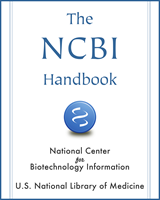From: Chapter 20, Using the Map Viewer to Explore Genomes

NCBI Bookshelf. A service of the National Library of Medicine, National Institutes of Health.

(a) The marker D1S2894 is found on several maps. Note that for the first map (STS), the circle is diagonally split with two colors. The diagonal means that the marker has been placed more than once; the two colors mean that the placements are not on the same chromosome. (b) A Map Viewer display of a region of chromosome 16. SNPs that are placed more than once on the chromosome are designated by a yellow triangle. From the Contig map, it appears that at least one of these SNPs (rs3220808) is placed both on draft sequence (orange) and on finished sequence (blue). This may be an artifact resulting from misassembly or perhaps a region of segmental duplication. This diagram also illustrates the use of color to indicate the source and level of confidence in annotated genes. Blue indicates a confirmed gene with no conflicts; light green indicates EST evidence only; dark brown indicates a GenomeScan prediction with protein homology; orange means that there is a conflict between the annotated gene and the mRNA evidence. (Ab initio predictions from GenomeScan are categorized into two types, based on presence or absence of sequence similarity to vertebrate proteins or protein domains.)
From: Chapter 20, Using the Map Viewer to Explore Genomes

NCBI Bookshelf. A service of the National Library of Medicine, National Institutes of Health.